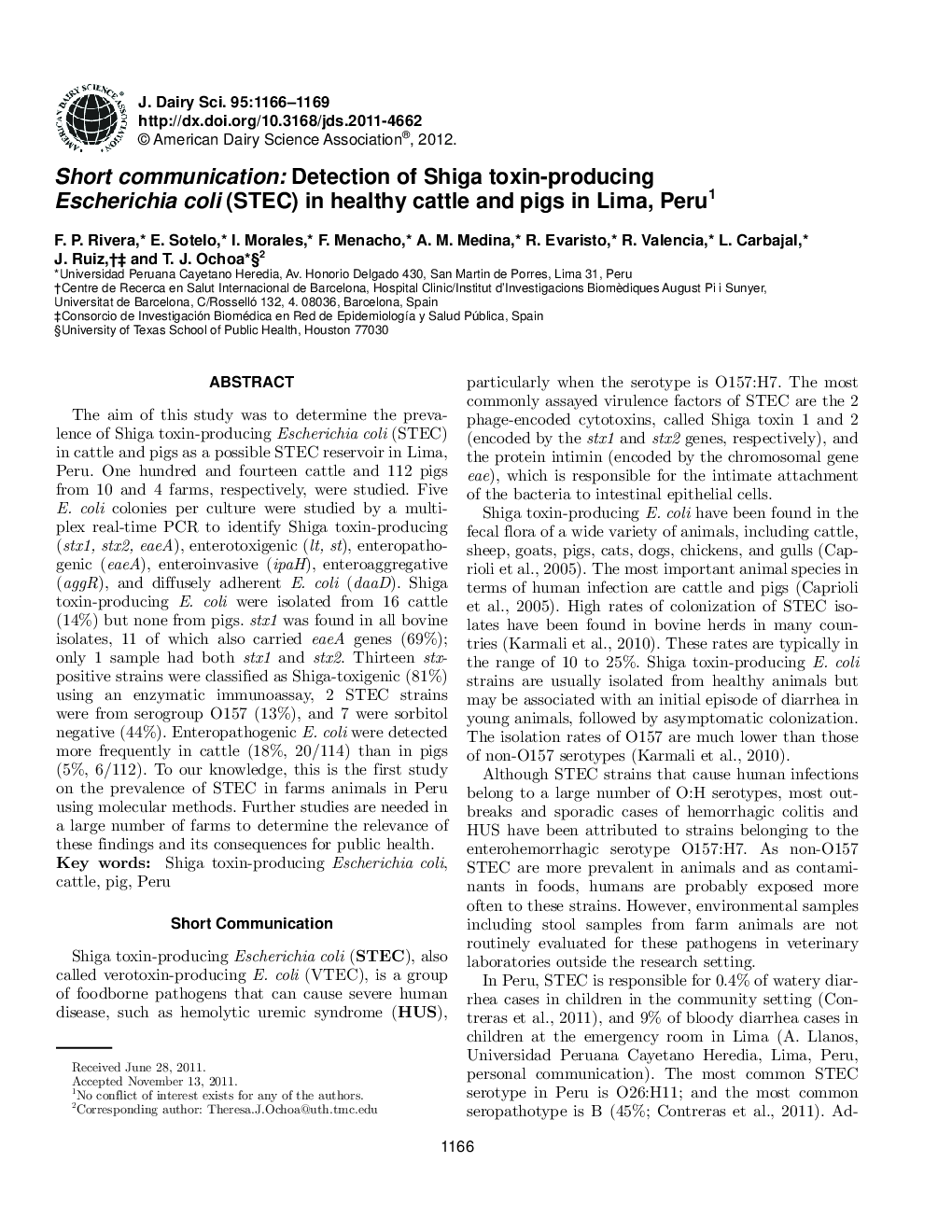| Article ID | Journal | Published Year | Pages | File Type |
|---|---|---|---|---|
| 10976534 | Journal of Dairy Science | 2012 | 4 Pages |
Abstract
The aim of this study was to determine the prevalence of Shiga toxin-producing Escherichia coli (STEC) in cattle and pigs as a possible STEC reservoir in Lima, Peru. One hundred and fourteen cattle and 112 pigs from 10 and 4 farms, respectively, were studied. Five E. coli colonies per culture were studied by a multiplex real-time PCR to identify Shiga toxin-producing (stx1, stx2, eaeA), enterotoxigenic (lt, st), enteropathogenic (eaeA), enteroinvasive (ipaH), enteroaggregative (aggR), and diffusely adherent E. coli (daaD). Shiga toxin-producing E. coli were isolated from 16 cattle (14%) but none from pigs. stx1 was found in all bovine isolates, 11 of which also carried eaeA genes (69%); only 1 sample had both stx1 and stx2. Thirteen stx-positive strains were classified as Shiga-toxigenic (81%) using an enzymatic immunoassay, 2 STEC strains were from serogroup O157 (13%), and 7 were sorbitol negative (44%). Enteropathogenic E. coli were detected more frequently in cattle (18%, 20/114) than in pigs (5%, 6/112). To our knowledge, this is the first study on the prevalence of STEC in farms animals in Peru using molecular methods. Further studies are needed in a large number of farms to determine the relevance of these findings and its consequences for public health.
Related Topics
Life Sciences
Agricultural and Biological Sciences
Animal Science and Zoology
Authors
F.P. Rivera, E. Sotelo, I. Morales, F. Menacho, A.M. Medina, R. Evaristo, R. Valencia, L. Carbajal, J. Ruiz, T.J. Ochoa,
